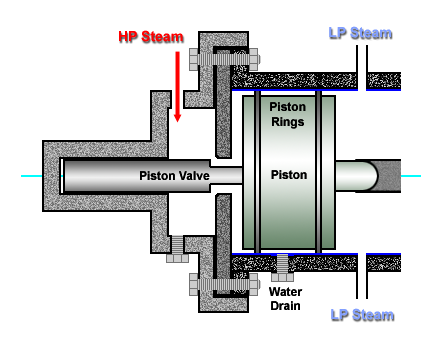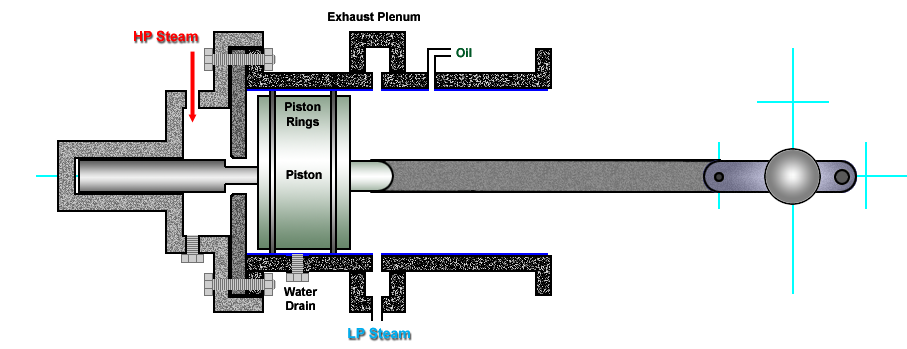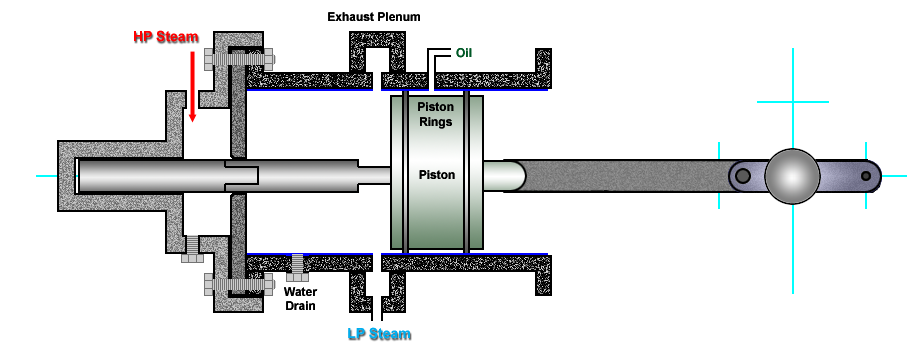Steam Engine Design/Piston Valve: Difference between revisions
(Created page with "One of the problems with the bump valve (and some other kinds of steam engine valves) is that spring used hold the valve closed heats up from the steam around it. Over time, thi...") |
No edit summary |
||
| (4 intermediate revisions by 2 users not shown) | |||
| Line 1: | Line 1: | ||
One of the problems with the bump valve (and some other kinds of steam engine valves) is that spring used hold the valve closed heats up from the steam around it. Over time, this weakens the spring (annealing, likely) causing either to fail or lose | {{Category=Steam Engine}} | ||
[[Steam Engine Design/Valves]] | |||
One of the problems with the bump valve (and some other kinds of steam engine valves) is that spring used hold the valve closed heats up from the steam around it. Over time, this weakens the spring (annealing, likely) causing either to fail or lose its stiffness and ability to keep the valve closed. A piston valve eliminates that problem by doing away with the spring. | |||
[[Image:Piston-Valve.png]] | [[Image:Piston-Valve.png]] | ||
While the piston valve solves the problem of spring failure, it introduces another problem. The valve enters the cylinder cap through the valve seat as the piston head moves past top dead center. It must enter the valve seat precisely else chipping of the valve or the valve seat is likely. Furthermore, the fit of the valve in the cylinder cap must be tight or steam will leak through it. | While the piston valve solves the problem of spring failure, it introduces another problem. The valve enters the cylinder cap through the valve seat as the piston head moves past top dead center. It must enter the valve seat precisely else chipping of the valve or the valve seat is likely. Furthermore, the fit of the valve in the cylinder cap must be tight or steam will leak through it. | ||
[[Image:Design-3-A.png]] | |||
[[Image:Design-3-B.png]] | |||
[[Image:Design-3-C.png]] | |||
[[Category:Steam Engine]] | |||
Latest revision as of 17:02, 22 June 2011
Main > Energy > Steam Engine
One of the problems with the bump valve (and some other kinds of steam engine valves) is that spring used hold the valve closed heats up from the steam around it. Over time, this weakens the spring (annealing, likely) causing either to fail or lose its stiffness and ability to keep the valve closed. A piston valve eliminates that problem by doing away with the spring.
While the piston valve solves the problem of spring failure, it introduces another problem. The valve enters the cylinder cap through the valve seat as the piston head moves past top dead center. It must enter the valve seat precisely else chipping of the valve or the valve seat is likely. Furthermore, the fit of the valve in the cylinder cap must be tight or steam will leak through it.



